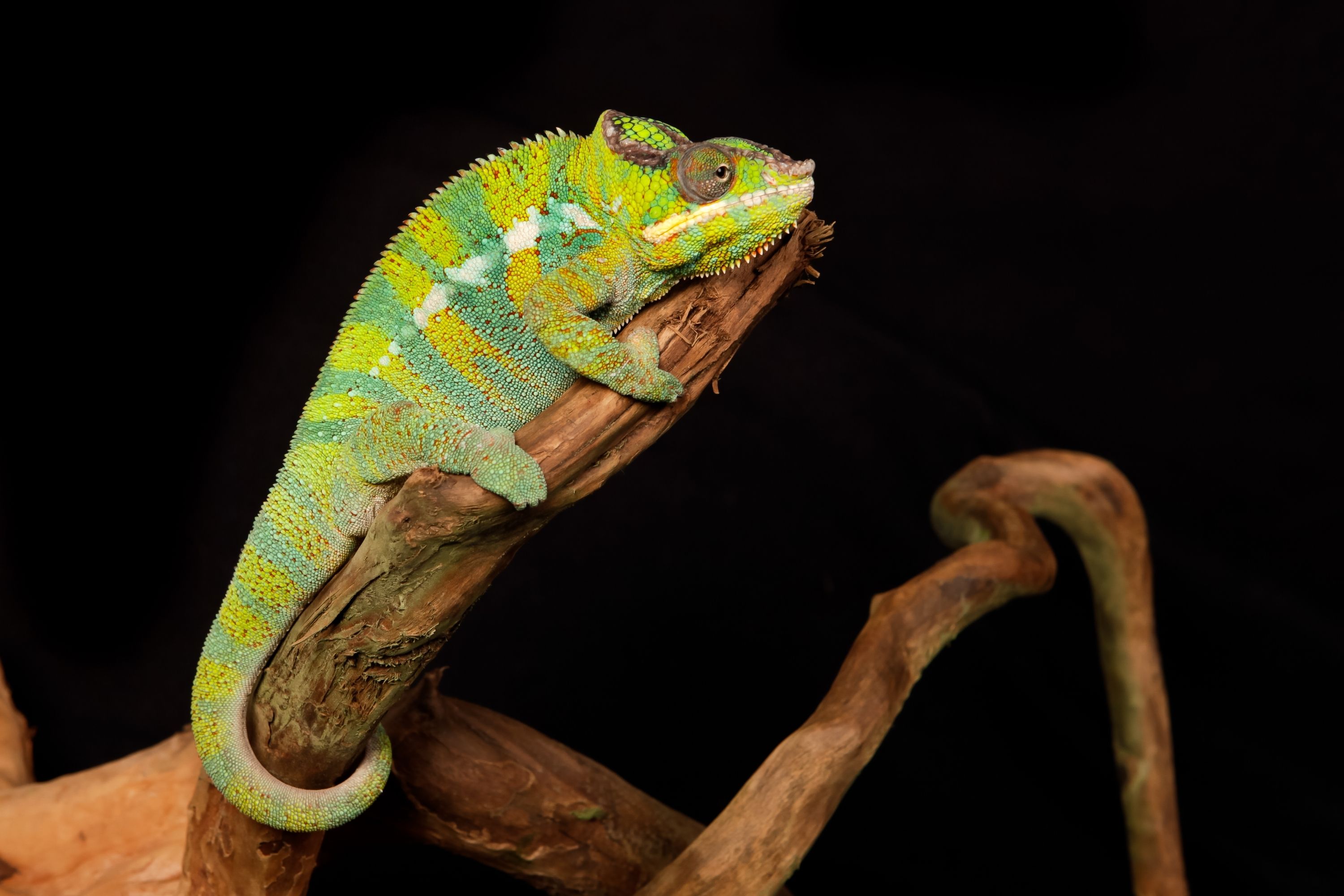Panther chameleon
(Furcifer pardalis)

Description
The panther chameleon (Furcifer pardalis) is a species of chameleon found in the eastern and northern parts of Madagascar in a tropical forest biome. Additionally, it has been introduced to Réunion and Mauritius. Panther chameleons grow 16-20" (40-51cm) long, with females typically being smaller than males. In a form of sexual dimorphism, males are more vibrantly colored than the females. Coloration varies with location, and the different color patterns of panther chameleons are commonly referred to as 'locales', which are named after the geographical location in which they are found. Panther chameleons from the areas of Nosy Be, Ankify, and Ambanja are typically a vibrant blue, and those from Ambilobe, Antsiranana, and Sambava are red, green or orange. The areas of Maroantsetra and Tamatave yield primarily red specimens. Numerous other color phases and patterns occur between and within regions. Females generally remain tan and brown with hints of pink, peach, or bright orange, no matter where they are found, but there are slight differences in patterns and colors among the different color phases. The panther chameleon was first described by French naturalist Georges Cuvier in 1829. Its generic name (Furcifer) is derived from the Latin root furci meaning "forked" and refers to the shape of the animal's feet. The specific name pardalis refers to the animals' markings, as it is Latin for "leopard" or "spotted like a panther".The English word chameleon (also chamaeleon) derives from Latin chamaeleō, a borrowing of the Ancient Greek (khamailéōn), a compound of (khamaí) "on the ground" and (léōn) "lion". The Greek word is a calque translating the Akkadian nēš qaqqari, "ground lion". This lends to the common English name of "panther chameleon".
Taxonomic tree:







